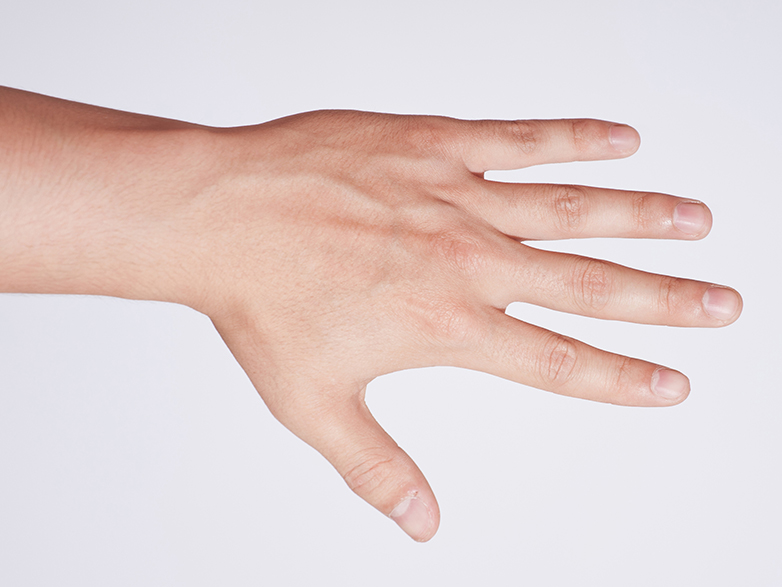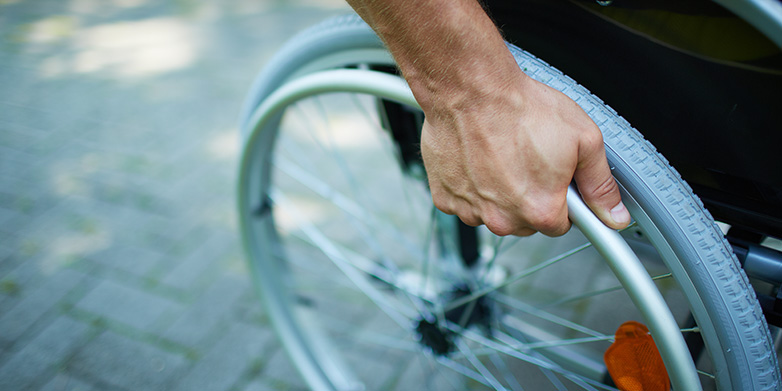Brain to foot: come in, foot!
Injuries to the spinal cord partially or completely disrupt the neural pathways between the brain and the limbs. The consequences for the representation of the affected limbs in the brain can be drastic. ETH researchers have now measured how severely this representation is affected.
A strange sensation, but familiar to anyone who has ever been given local anaesthesia and watched while a doctor operated on their leg or arm: in that moment, your own body part seems foreign, as if it doesn’t belong to your body. One reason for this is that the brain still knows which position the limb occupied before the local anaesthetic took effect. As soon as it wears off, the spooky sensation disappears.
Persistent sense of estrangement
For people who have suffered a spinal cord injury or a stroke, however, this “estrangement” of their own limbs doesn’t go away, because an injury of this kind impairs or disrupts communication between the brain and the body. This impacts the anatomical reconstruction of the body in the brain, known as body representation.
Our brain and our limbs, such as arms, legs, feet and hands, constantly exchange data on position, orientation and condition – somatosensory information. The eye is involved in body awareness as well. The brain, for its part, processes this visual and somatosensory information to form an image of the body and “files” it in the cerebral cortex. Whether and to what extent damage to the spinal cord alters the body representation, however, is still a matter of dispute among experts and doctors. Studies carried out on this have reached conflicting conclusions.
Now researchers from a number of institutions have conducted a new study that sheds more light on the matter. One of the leaders of this study, which was just published in the journal Nature - Scientific Reports, was ETH Zurich Professor Roger Gassert from the Rehabilitation Engineering Laboratory.
Interpreting body images in our minds
In the study, the researchers used an established test to analyse whether and to what extent the body representation in paraplegics differs from that in healthy individuals.
To this end, during his research sabbatical at ETH Zurich, corresponding author Silvio Ionta (now lecturer at the University of Lausanne) developed a task in which participants were shown pictures of foreign body parts, such as a foot or a hand, or even of the entire body. While the images were being presented, the participants could not see their own hands and feet, but kept them either parallel to one another or in a crossed position.

Participants – 22 patients with either a partial (11) or complete (11) severing of the spinal cord, and 16 control subjects with an intact spinal cord – were asked to determine which side of the body the body parts presented in the pictures belonged to. The images were also shown in various orientations. Finally, the researchers measured the time it took from the presentation of the image until the subjects gave a verbal response. “This test allows us to query, indirectly and objectively, whether and how the brain and limbs communicate with each other,” says Gassert.
Longer response time with damaged spinal cord
The task was more difficult for participants whose spinal cord was completely severed. On the task with full body images, they took considerably longer – up to 50% more response time – than participants with partial and no spinal cord injury. “The more severely the spinal cord is damaged, the longer the response time needed to assess pictures of the body, and the greater the alteration of the full-body representation in the brain,” says Gassert.
He goes on to explain that the brain subconsciously perceives the observer’s own current body position while looking at the pictures, and that this influences their assessment of the image. If the spinal cord is completely severed, the brain receives only visual stimuli. As Gassert concludes, “The body representation is thus distorted, and those affected have greater difficulty solving the assigned task.”
But the tests also helped the researchers to estimate how strongly the partial or complete paraplegia affects the representation of the body parts they showed. In all participants, hand representation was unchanged. When participants held their own hands crossed during the tests, a similar increase in response time was observed in all three groups.
The position of the feet, on the other hand, had a noticeable impact on response time, but only for participant whose spinal cord was entire or only partially damaged. Those with complete paraplegia did not show the typical increase in response times that one would expect in healthy conditions. This suggests that the brain in individuals with a complete severing of the spinal cord represents the foot differently than is the case with individuals whose brain still receives information from the lower extremities.
Participants with partial or complete paralysis are able to solve the tasks just as precisely and correctly as healthy subjects – this also tells Gassert that the representation in the brain is dynamic and adaptable.
Controlling exoskeletons or prosthetics by thought
According to Gassert, the study also has implications for rehabilitation and therapy for people with paraplegia. “This test can help hospital staff to objectively determine the extent to which the body representation in the brain has been altered,” he says.
But he can also see the findings gained with this test method helping to stimulate the brain networks responsible for body representation, thus keeping them active. Likewise with a view to potential human-machine interfaces, which could soon become important in enabling patients to walk with exoskeletons or prosthetics.
“This approach could help keep the body representation ‘awake’ even after a spinal cord injury. Going beyond that, it could serve to produce standardised mental commands and thus move an exoskeleton with a brain-computer interface,” says Gassert.
The test was developed by Roger Gassert’s former research associate Silvio Ionta, who now works at the University of Lausanne. Gassert’s study was co-led by Armin Curt from the Balgrist University Hospital Paraplegic Centre.
Brain Fair
This year’s external page BrainFair hosted by the Neuroscience Center Zurich is coming to an end on Saturday and a stimulating series of talks has been planned for the final day. Numerous researchers from the University of Zurich and ETH Zurich will discuss how movement affects the brain and vice versa. One of the speakers is ETH professor Roger Gassert. Together with Michelle Starkey (neuroscientist, Balgrist University Hospital), Armin Curt, (neurologist, Balgrist University Hospital) and William Taylor (engineer, ETH), Gassert will introduce a project titled ZurichMove – Bewegungssensoren, die Sie bewegen (ZurichMove – movement sensors that will move you). Click external page here to find out more about the other lectures.
«Brain Fair Zürich 2016: Bewegung». Saturday, March 19th 2016; short presentations, 11.00-15.20 hrs, Auditorium Maximum ETH Main building, Rämistr. 101, Zurich.
Cybathlon
Humankind has long dreamed of helping those with paraplegia walk again. While this dream has not yet been completely realised, we now have numerous assistive technologies that make everyday life easier for people with physical disabilities. Cybathlon offers an up-to-date overview of these technologies. There, people with physical limitations compete with one another using the latest assistive technologies, and this tests how well the participants manage to execute everyday tasks using motorised artificial legs, portable prosthetic arms, actuated braces (exoskeletons), motorised wheelchairs, electrical muscle stimulation and novel brain-computer interfaces. Some of these technical aids are products that are already on the market, and some are prototypes from research labs from around the globe.
Cybathlon, October 8th 2016, Ice Hockey Stadium "Swiss Arena", Kloten, Switzerland.
Reference
Ionta S, Villiger M, Jutzeler CR, Freund P, Curt A, Gassert R. Spinal cord injury affects the interplay between visual and sensorimotor representations of the body. Scientific Reports 6, Article number: 20144 (2016) DOI:external page 10.1038/srep20144

Comments
No comments yet